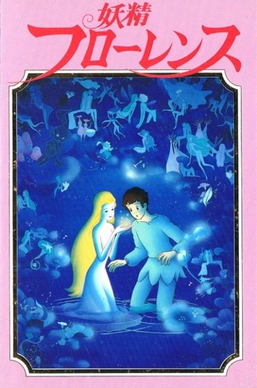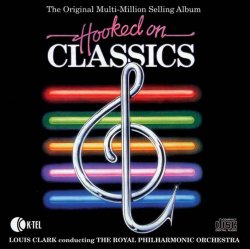Related Research Articles
Sir Donald Francis Tovey's Essays in Musical Analysis are a series of analytical essays on classical music. The essays came into existence as programme notes, written by Tovey, to accompany concerts given by the Reid Orchestra in Edinburgh. Between 1935 and 1939, they were published in six volumes as Essays in Musical Analysis. Each volume focused on a certain genre of orchestral or choral music, with many of the works discussed with the help of music examples. In 1944, a posthumous seventh volume appeared on chamber music. In 1989, a new version was published with some essays omitted and the remainder of Volumes I-VI consolidated into two volumes.
In music, variation is a formal technique where material is repeated in an altered form. The changes may involve melody, rhythm, harmony, counterpoint, timbre, orchestration or any combination of these.

Frederick Stock was a German conductor and composer, most famous for his 37-year tenure as music director of the Chicago Symphony Orchestra.
E-flat major is a major scale based on E♭, consisting of the pitches E♭, F, G, A♭, B♭, C, and D. Its key signature has three flats. Its relative minor is C minor, and its parallel minor is E♭ minor,.
E minor is a minor scale based on E, consisting of the pitches E, F♯, G, A, B, C, and D. Its key signature has one sharp. Its relative major is G major and its parallel major is E major.
Grigory Romanovich Ginzburg was a Soviet pianist.
Discography for the cellist Yo-Yo Ma.
Ernest Tomlinson MBE was an English composer, particularly noted for his light music compositions. He was sometimes credited as 'Alan Perry'. Tomlinson wrote over 100 pieces of library music, thirteen orchestral suites, symphonic works and music for brass band.

A Journey Through Fairyland is a 1985 Japanese animated film by Sanrio, the company which animated Unico, The Sea Prince and the Fire Child and Ringing Bell, though this story is less sought out as a rarity among Sanrio cult classic collectors. It was Sanrio's final feature-length anime film until 2007. It was brought to America in 1989 through a company called Celebrity Home Entertainment. Unlike previous works, this one mainly focuses on music more than plot, prompting it to be compared with Disney's older work Fantasia. The one original piece is "My Name is Florence," which contains lyrics and is sung in the film; all other songs on the soundtrack are works of classical composition, written by Beethoven and other similarly noteworthy composers.
The University City Symphony Orchestra is a non-profit community orchestra located in the St. Louis area. This is a partial listing of its programs during its 40+ year existence:
This is a complete list of recordings by the Los Angeles Philharmonic, shown alphabetically by conductor, and then by recording label.
Selected discography of recordings conducted by Thomas Beecham:
Alsatian conductor Charles Munch was one of the most widely recorded symphonic conductors of the twentieth century. Here is a partial list of his recordings.
Musical quotation is the practice of directly quoting another work in a new composition. The quotation may be from the same composer's work (self-referential), or from a different composer's work (appropriation).
Musical tributes or homages from one composer to another can take many forms. Following are examples of the major types of tributes occurring in classical music. A particular work may fit into more than one of these types.
Tangled Tunes is a piece of light classical music by Albert Ketèlbey, first recorded in 1914, comprising 107 melodies with some repetitions.

The 50 Greatest Pieces of Classical Music is a compilation of classical works recorded by the London Philharmonic Orchestra with conductor David Parry. Recorded at Abbey Road Studios, Royal Festival Hall and Henry Wood Hall in London, the compilation was released in digital formats in November, 2009 and as a 4-CD set in 2011. The 50 Greatest Pieces of Classical Music has sold over 200,000 copies and spent over three days as one of the top 10 classical albums on iTunes.

Hooked on Classics, produced by Jeff Jarratt and Don Reedman, is a multi-million selling album recorded by Louis Clark and the Royal Philharmonic Orchestra, published in 1981 by K-tel and distributed by RCA Records, part of the Hooked on Classics series.

Hooked on Classics 2: Can't Stop the Classics is an album by Louis Clark and the Royal Philharmonic Orchestra, published in 1982 by K-tel, part of the Hooked on Classics series.
In music, Op. 1 stands for Opus number 1. Compositions that are assigned this number include:
References
- ↑ Ernest Tomlinson (1983). Fantasia on Auld Lang Syne: For Two Pianos and Two Turn-overs . Preston: Electrophonic Music Company
- 1 2 3 Ernest Tomlinson (1976). Fantasia on Auld Lang Syne. Programme note
- ↑ Alistair Mitchell (2019). A Chronicle of First Broadcast Performances of Musical Works in the United Kingdom , p. 446
- ↑ This is the composer's figure: the exact number has been variously reported. Programme note by Ernest Tomlinson (1976)
- 1 2 M.J Grant (2021). Auld Lang Syne: A Song and its Culture , end of Section 7.3
- ↑ This solution was first proposed by Richard Powell (husband of Dorabella) in Music & Letters, Vol. XV, July 1934, pp 203-208, but Elgar had already denied it in a postcard responding to a query from critic Dyneley Hussey in 1920. He replied, “No. Auld Lang Syne won’t do.” Turner, Patrick. Elgar's ‘Enigma’ Variations - a Centenary Celebration. Thames Publishing, 1999, p. 107
- ↑ Rob Barnett (2002). 'An Interview with the Conductor: Gavin Sutherland', at MusicWeb International